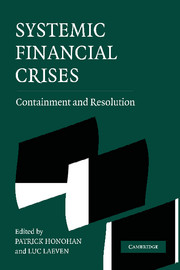1 - Introduction and Overview
Published online by Cambridge University Press: 24 August 2009
Summary
INTRODUCTION
Financial sector crises present exceptionally difficult challenges for the policy maker. They often emerge unexpectedly, evolve with breakneck speed, and threaten to strangle a large part of national economic activity unless promptly and decisively addressed. Whether this action is to involve closures of banks, or the introduction of government guarantees to substitute for a loss of confidence, or a realignment of exchange rates, future economic prosperity depends on the relevant decisions being made with a sure sense of what is feasible and credible.
Whatever action is taken to contain the crisis in the initial days and with whatever success in restoring confidence, much work remains. Banks and other firms will be insolvent, leaving broken contracts and a lack of credit to allow business to move forward. If the ground has been well prepared, clearly defined bankruptcy procedures will facilitate a restructuring of ownership. But government intervention may be called for to ensure resolution of these problems and place the system on a sound basis.
Crises can recur, and the probability of this happening likely depends on the actions taken in the past. The threat of moral hazard behavior based on market participants' expectations of bailout, though not necessarily decisive, has to be factored in to the judgment on how to deal with crises.
- Type
- Chapter
- Information
- Systemic Financial CrisesContainment and Resolution, pp. 3 - 22Publisher: Cambridge University PressPrint publication year: 2005
- 4
- Cited by



